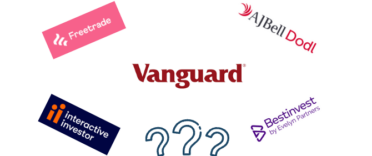
What is a let-to-buy mortgage?
A let-to-buy mortgage is like a reverse version of buy-to-let. Essentially, a bank or building society will let you remortgage your current property onto a buy-to-let style loan and then you withdraw some extra cash from the equity you hold in it to put down as a deposit for a mortgage on a new home.
You then rent out your old property after purchasing and moving into your new one. The rent should cover your mortgage repayments on the remortgage and you will need to use your own income to fund the mortgage on your new property.
The lending criteria for a let-to-buy mortgage depends on each lender but the typical maximum loan-to-value (LTV) is 75 per cent. Most have a minimum age of 25 and a maximum of 75. You will need to ensure the rent on your old property covers the mortgage, it usually needs to come to at least 125 per cent of the mortgage interest that is owed. The lender will want to see evidence of your new purchase and you must pass its affordability and income tests. This will mean having a good credit report and recognised income.
How do let-to-buy mortgages work?
There are lots of factors to consider when opting for a let-to-buy mortgage as you are getting two mortgages - a remortgage for your old property and a mortgage for the new one - and you need to be able to afford and meet the eligibility criteria for both.
The lender needs to be able to see that you have enough equity in your property to fund a deposit for the remortgage, plus you will need to have extra that you can withdraw to use as a deposit for your new mortgage. You would do this by borrowing at a higher LTV. For example, if your current mortgage is £250,000, rather than borrowing the same amount you could get a remortgage for £270,000 and take the extra £20,000 to put towards a deposit for your purchase.
A mortgage broker should be able to help guide you through the process but here are the key steps to follow.
- Value your property - The first aspect of a let-to-buy application is a remortgage onto a buy-to-let style loan. As with any remortgage application, you will need to provide a valuation of your property. This can be done by an estate agent or you could check local values on property websites such as Rightmove and Zoopla.
- Get an idea of the rental value - The remortgage application will consider your income but as it is becoming a rental property the lender will also want to know that the rent will cover the mortgage. This is known as rental coverage and lenders will provide a minimum figure, usually around 125 per cent of the interest payable. You must ensure you can charge enough rent on your property to meet these requirements and will need a lettings agent to verify this. Agency trade body ARLA Propertymark is a good place to find verified lettings agents.
- Apply for each mortgage - Use a mortgage broker so that they can manage this process. If you don't have a mortgage then you may wish to check out our Habito review. Mortgage brokers such as Habito* can manage the whole let-to-buy process for you. The remortgage application will consider the property value and rent details and will also check your credit history to ensure you can pay the mortgage if there are any void periods. The mortgage on your new property will be treated as a new application so your credit report will be checked, your income will be assessed and you will need to meet a lender’s affordability criteria and interest-rate stress tests. Maximum LTVs are also usually at around 75 per cent but there are some lenders that will go up to 80 per cent LTV. When you are applying for the new mortgage the buy-to-let you have created will be counted as existing borrowing when considering your application. As you are taking out two mortgages a lender will take account of this when assessing an application and considering how much you can borrow. This will mean you need to have a good income and a strong credit report to boost your chances of approval as a lender will need to be confident you can meet repayments on both.
- Time your applications - Even if you are applying for the remortgage and new mortgage at the same time and through the same lender, it is unlikely that both will be assessed and approved at the same time and so you will need to be patient. You will however need to apply for both the remortgage and new mortgage around the same time or at least guarantee you can get them approved on the same day. For example, you would not be able to complete the mortgage for your new property without getting approved for the remortgage on your old one, as that one is needed to release cash for your deposit.
- Don’t forget the tax - Taking out a let-to-buy mortgage will mean you own a second home, even if the new one is your main residence. You will need to pay the additional 3% stamp duty rate when purchasing your new property. This can make a big difference. If you were moving to a £250,000 property, the stamp-duty rate on the first £125,000 would be zero and the rate on the rest would be 2% or £2,500. But as you are not selling your old property you are becoming a second homeowner so must pay the additional 3% rate on both bands. That means a 3% stamp duty charge on the first £125,000 and a 5% charge on the remaining amount, giving you a tax bill of £10,000. You will need to pay this initially but it can be refunded if you sell your old property within 36 months.
Who is a let-to-buy mortgage most suitable for?
Let-to-buy is most suitable for those who have somewhere they want to buy but are unable to or don’t want to rush selling their current home or if you choose to move in with a partner but want to hold onto your property. On the other hand you may see your current property as a good rental property investment and would rather choose not to sell your home to move elsewhere. Let-to-buy is a pretty specialist market so there is a reduced panel of lenders and most only work through mortgage brokers, meaning there may also be adviser fees to pay.
Can I get a let-to-buy mortgage with bad credit?
Having arrears, county court judgements or bankruptcy on your credit file is difficult enough when getting a standard mortgage but lenders will be checking it for two applications with let to buy, which can make it harder.
Get tips on how to improve your credit score in our credit score guide.
Can I get an interest-only let-to-buy mortgage?
Most buy-to-let mortgages are granted on an interest-only basis. This will be the same for the mortgage you get on the existing property that you are turning into a rental. However, the residential mortgage for the new property is more likely to be a repayment mortgage as it can be harder to get interest-only mortgage deals for these types of products. You will need to provide evidence of a repayment vehicle if you do want an interest-only option for the residential mortgage.
We cover the subject of let-to-buy mortgages as well as consent to let in our video '10 rarely asked mortgage questions' - check it out below
Alternatives to let-to-buy mortgages
Below we look at the alternatives to purchase a new home instead of getting a let-to-buy mortgage:
Buy-to-let mortgages
If you are happy where you are but want to get exposure to the rental market or just want to rent rather than buy a property elsewhere, you could instead go for a buy-to-let mortgage.
The main difference between a buy-to-let and let-to-buy mortgage is the position of the property. A buy-to-let mortgage is used to purchase a property to let out, while a let-to-buy is used to rent an existing home. You only have to worry about the valuation of one property with a buy-to-let mortgage but the requirements will be similar in terms of ensuring there is enough rental coverage and your income can cover any void periods. It also means only one set of arrangement fees to pay whereas with a let-to-buy you could end up having to pay fees for both mortgages.
Read our guide - "How to make money from buy-to-let".
Second-charge mortgages
Another way to release equity from your home without a remortgage is by using a second-charge mortgage. This lets you take a loan secured against the value of your property which you could then put towards the deposit for your new property. You will be responsible for a second mortgage and must meet the monthly repayments. This can work out cheaper than let-to-buy if there are early repayment charges for the remortgage aspect.
Consent to let
Letting a property is against most terms and conditions for residential mortgages however some lenders will allow you to do so, so long as you seek permission. This is called 'consent to let'. Lenders are not obliged to approve this but if they do it would automatically move your residential mortgage to a buy-to-let. You could then rent somewhere more suitable and save for your next purchase.
Renting
If you have found the ideal location, either because of work or schools, it may be worth just selling up and renting even if it means accepting a lower offer. This saves you any stamp-duty costs and you can keep an eye on the market if you want to buy again.
Let-to-buy mortgage providers
Most let-to-buy mortgages are offered through brokers, so it can be hard to compare the rates on offer. You can get a let-to-buy mortgage through the intermediary brands of most lenders including Lloyds, Nationwide, TSB, Virgin Money and Clydesdale. Each lender will display a rate for the buy-to-let aspect of the mortgage but you will need to then apply separately for the residential mortgage - usually you don't have to arrange the residential mortgage with the same lender.
At the end of the term, if you remortgage you will move onto a standard buy-to-let mortgage.
Pros and cons of a let-to-buy mortgage
Pros
- Removes the stress of selling
- Move quicker
- Benefit from house-price growth
Cons
- Two mortgages to repay
- Extra stamp duty
- Extra fees
- Extra responsibility
- Less choice
Summary
It can take around 12 weeks to sell a property and it could be longer if you don’t get the offer you want or there are disputes between exchange and completion. Using a let-to-buy mortgage removes the pressure of having to sell. You can take your time and benefit from the rental income instead and won’t miss out if you have somewhere you want to buy. You will also be in a better financial position for your new purchase as there is no chain, which may make your offer more attractive to another seller. There is also the added benefit of being able to move without waiting for your own property to complete. Buying a second home and therefore having two properties gives you extra exposure to the housing market so you will benefit from any growth in house prices on both.
There are some downsides. You will have two mortgages to pay, which will increase your monthly expenditure. The rental income should cover some of this but there may be periods when the property is vacant and the mortgage will still have to be paid. A let-to-buy borrower is also hit with the additional stamp-duty rate as you become a second homeowner. It will be possible to get a refund if your old property is sold within three years but you still need to pay the tax upfront. You will also become a landlord, so you may need to factor in lettings agency fees to have the property managed. This brings extra responsibilities such as making sure the property is well maintained and safe for tenants, plus you will be responsible for reporting your rent to HMRC and paying any tax owed.
Additionally, as let-to-buy is a smaller, niche market there is a limited choice of rates and you will most likely need a mortgage broker to find a suitable deal. This may mean paying higher rates than a standard mortgage, plus you may have fees to pay for two loans as well as whatever a broker charges.






